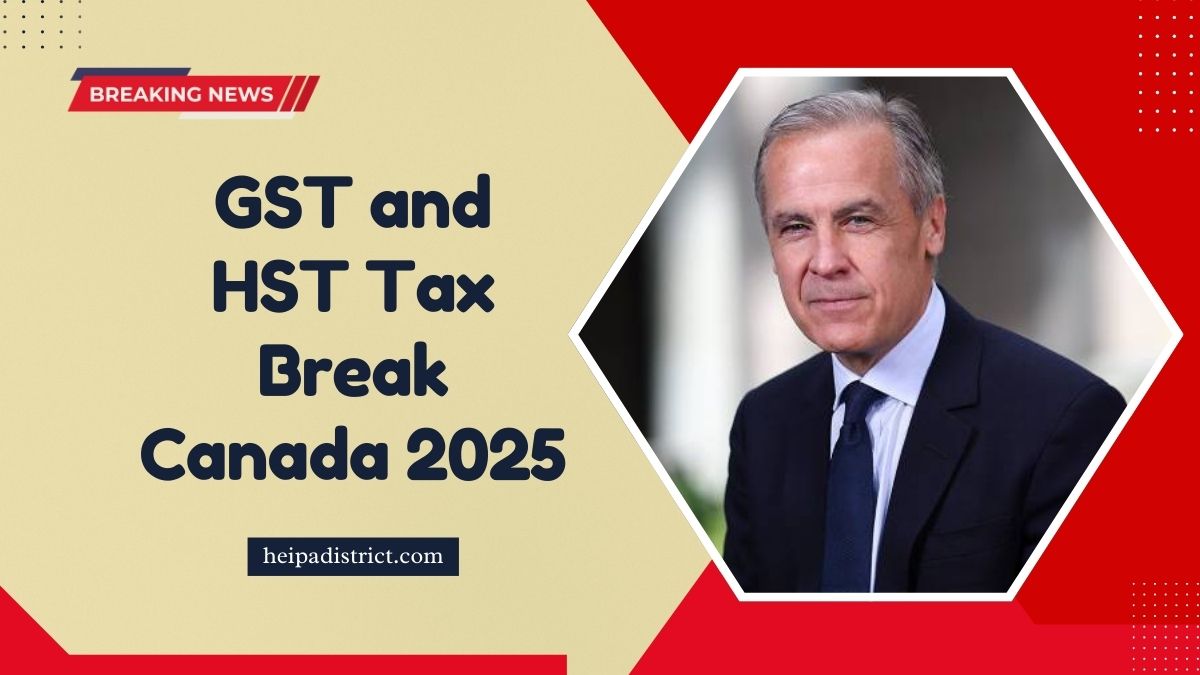GST And HST Tax Break Canada 2025- How To Save More And Spend Less This Season
The Canadian government has launched a temporary GST and HST tax break aimed at providing financial relief to families and individuals during the peak spending season.
With inflation and rising costs stretching household budgets, this initiative is expected to put more money in your pocket and reduce everyday expenses from now until May 25, 2025.
What Is the GST and HST Tax Break?
This new tax measure exempts a wide range of holiday and essential goods from the Goods and Services Tax (GST) and Harmonized Sales Tax (HST). The exemption began on December 14, 2024, and will continue through May 25, 2025, offering Canadians nearly five months of relief from sales taxes on select products.
Retailers across the country are expected to automatically remove GST/HST at the point of sale for eligible items such as groceries, children’s clothing, takeout, books, and holiday gifts.
Overview of the Tax Break Program
| Feature | Details |
|---|---|
| Program Name | GST and HST Tax Break Canada 2025 |
| Effective Dates | December 14, 2024 – May 25, 2025 |
| Benefit | No GST/HST on select holiday and essential items |
| Estimated Federal Tax Relief | $1.6 billion |
| Average Household Savings | $100 – $200 |
| Maximum Savings for $2,000 Spend | $300+ in HST provinces |
Items Covered Under the GST and HST Tax Break
Canadians can expect to save on a wide variety of goods during this period, including:
- Children’s clothes and shoes
- Toys, puzzles, and books
- Groceries and non-alcoholic beverages
- Takeout food
- Video games, controllers, and consoles
- Christmas decorations and trees
- Printed newspapers
- Diapers and car seats
For residents in HST-participating provinces like Ontario and Prince Edward Island, the savings are even more significant. For example, a $2,000 expenditure on qualifying items in Ontario could yield up to $260 in savings.
Financial Impact on Households
The amount saved depends entirely on how much you spend and what items you purchase during the tax break window. According to estimates:
- A family spending $2,000 could save between $100 to $300.
- The higher the provincial HST rate, the more you save.
- Savings free up cash for essential bills, savings, or even charitable giving.
Why This Tax Break Matters Now
Amid a time of rising inflation and economic uncertainty, this federal tax exemption provides real and immediate relief for Canadian households. Though the initiative is temporary, its impact is being felt across sectors—from retail to family budgets.
It also complements the Working Canadians Rebate, another measure aimed at easing the financial strain on lower- and middle-income earners.
Potential Concerns
While many welcome the relief, experts caution that:
- Inflationary effects may offset some savings.
- Retailers may not reduce prices proportionally.
- Temporary relief may not address long-term affordability.
Some economists have suggested making tax exemptions permanent for essential goods to improve equity and long-term affordability for all Canadians.
The GST and HST Tax Break Canada 2025 initiative is a strategic move by the federal government to ease financial pressure during the high-spending holiday season.
By removing sales tax from essential and seasonal goods, Canadians can expect more money in savings and less in expenses.
While temporary, this tax break reflects growing concerns around affordability and may signal broader changes in consumer tax policy going forward.
FAQs
What dates is the GST/HST tax break active in Canada?
The tax break is active from December 14, 2024, to May 25, 2025, covering several months of holiday and seasonal shopping.
What types of items are exempt from GST and HST?
Eligible items include groceries, takeout food, children’s clothing, books, video games, and holiday decorations, among others.
How much can the average Canadian household save?
Estimates show savings of $100 to $200 per household, with up to $300+ in provinces with higher HST like Ontario.

